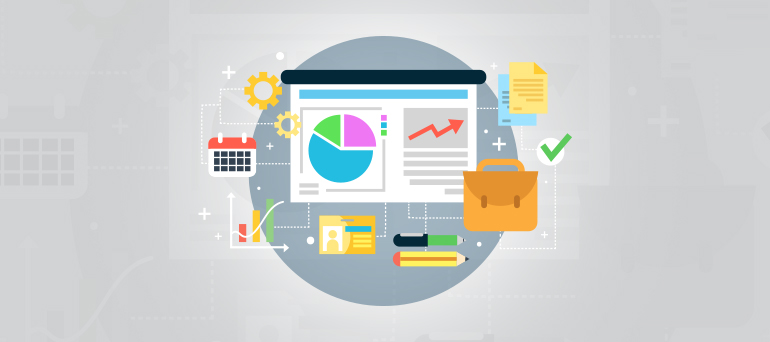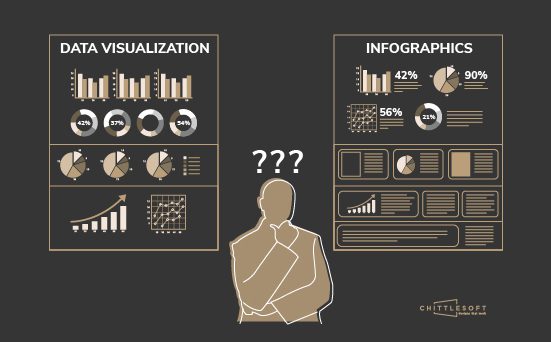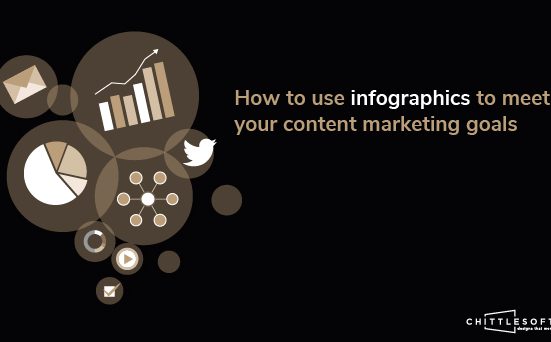
Well-made infographics can use data and visuals to give information to the target group. This includes information related to the products/services you offer. Infographics should be used to do more than just establish the brand image of your company. They should give updated information on a given subject, related to but not restricted to the products/services you offer. This information should be useful and relevant to your target audience. This will help you obtain a greater number of leads.
You can effectively use infographics for marketing in the following 5 ways –
1. Use visuals that convey information effectively
Effective infographics show data in forms that are easy to understand, by showing the significance of the data. 90% of the information that goes to the brain is visual and the brain processes visual information 60,000 times faster than text. Thus, effective infographics use well-made visuals that represent information and data in a manner that a pattern can be noticed (using charts, graphs etc.) As they are not text-heavy, they demand less effort of the viewer than plain text would. Using infographics is also a more engaging way to show how your products and services can be used to solve specific problems for the customers. It contains brief key points in text, and has graphics, colors and images that convey messages concisely but clearly. These elements help draw a person’s attention to the right places by highlighting those areas. You can communicate key points that make people interested in your firm and the work done, and encourage them to contact the firm. This form of giving information is especially effective in showing the timeline of your company, or the difference between any two aspects, to show that one is better than the other.
2. Give people information that will help them make a decision
Use infographics to convey information about a topic that people in your target group want to know more about. This should be useful information relevant to your industry and firm, as opposed to just that used for marketing your firm. Provide enough data to highlight key trends, without cluttering your infographic. A clean design will help you convincingly make an argument. Include lesser known facts, and lead the viewer to see things from a new perspective, arriving at a conclusion that tells people something new. You can do this by collecting primary data from within the context of your company. Information can be given in the form of numbers and words, but for effective marketing, the data used in infographics should be accurate. Accurate numbers and information can support other arguments made by you in the past, and can help people trust your firm. This can help you get new customers. You can give information in the form of social proof and anecdotes relevant to your work. This can give a context and bring the numbers, images and designs together. By giving people information using infographics, your audience will know where your expertise lies. This can then help them understand how you can help them.
3. Use infographics on blogs, websites and social media to increase website traffic
An infographic can give people an overview of your work and USPs. This makes people want to know more about your product/service. There can be a call to action included at the end of the infographic, which can direct customers to the website or to contact you for a service. You can also direct people to download free samples of the products described in the infographic. Infographics can be used to complement the text in blogs, and can include keywords (in tags) which helps bring in more traffic to the blogs and website. They can make more people want to read your blogs because of the attractive designs included in your infographic. This increases the visibility of your website and helps market your company. You can also use your infographics in other blogs, with a link to your website given at the end of the blog. This especially works when the blog is on the website of a company whose work is related to what you do, but complements it instead of substituting it. It was found that publishers that use infographics grow traffic 12% faster than those who don’t use infographics. Infographics can be used on various platforms such as website, blogs, and social media among others. This will help you get more traffic from various sources.
Infographics on Pinterest can help make your brand popular. Including your brand in an active, popular and a generic (enough) category makes it easier for people searching within that category to view your brand. It is important to know what people intuitively search for when they are looking for the product you are selling. The keywords that you insert while choosing a category need to be specific to you. The alt tags, title tags and file names that are inserted with the infographic should be descriptive. This will help you increase on-platform engagement. For increased visibility on Pinterest, it is essential to have high-quality infographics. You can direct leads generated on Pinterest to your website.
4. Post Infographics on a variety of platforms to reach a large number of people
This is a concise and visually pleasing means of giving information that can be embedded or inserted onto various platforms. Instagram is a space where images are shared and consumed, so this form of information is welcomed there. Facebook is another platform where information is preferred to be consumed in the form of images. Pinterest also encourages the classifying and sharing of infographics and is an excellent platform for making your brand known.
You can use it as a part of a blog, but in a manner that it can still be shared on its own. There can also be a separate landing page for infographics on your website. You can use infographics on the websites of other (partner) companies, with a link to your website given at the end. In this way, it reaches a larger number of people, such as the customer base of other companies. There are separate infographic submission sites that can help the information reach different groups of people that you haven’t yet reached. You can circulate parts of the infographics in emails, newsletters and brochures. They can be included in presentations given during conferences or events. You can also use them in e-learning, to make learning easier.
5. Use elements of your brand design on infographics to increase brand awareness and recall
Infographics can be used to increase brand awareness by using the same design (color, elements) that has already been used for your brand – on your website, in your presentations and on various other platforms. By using elements that people are already familiar with, which are associated with your products and services, you can use infographics to promote brand awareness. Your company’s logo, brand design and web address can be used on them. These infographics can be posted on various other platforms. Because it is a unique way of presenting how a problem can be solved using your product or service, it helps people remember your brand and what you offer, and may make them want to purchase your product/service numerous times. You can also establish a balance between sales communication (eg: showing offers, discounts available) and provide information that people are interested in. This increases brand awareness and recalls in an effective manner.
6. Track the infographic performance to understand your target group better
You can keep track of how your infographic is being consumed. Various aspects such as how much it has been clicked, shared, viewed and for how long it is active on various platforms can be measured. It will give you an idea of what kind of content and design the target group prefers. It could also indicate what information people have and what they don’t. You can then provide your audience with lesser-known content, and make effective infographics in the future. Using this data, you can better cater to the preferences of your target group. This will communicate to people who your target group is, and if they are a part of it.
Infographics are worth adding to your marketing efforts. They engage people, without demanding much of their time or effort, and can convey essential information that will help the buyer in the decision-making process. Use them to make people curious about your business, which will encourage them to contact you. By keeping track of how people respond to your infographics, you can learn more about potential customers as they learn about you.
If you’re looking for a digital design company to guide you on how to use infographics effectively in your marketing efforts, contact us: https://www.chittlesoft.com/contactus.html





1 Comment